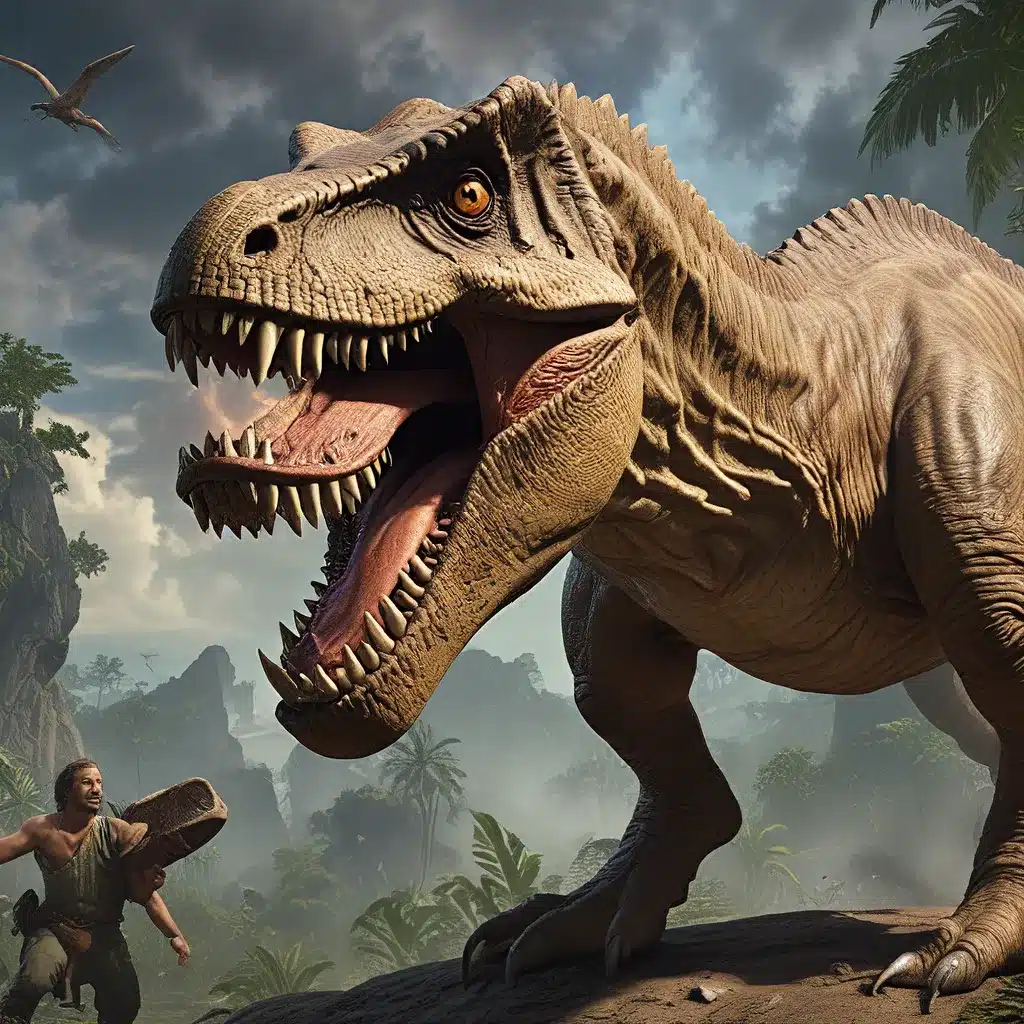
Uncovering the Mysteries of the Prehistoric World
The world of dinosaurs has long captured the imagination of humanity, from the awe-inspiring Tyrannosaurus rex to the graceful Brachiosaurus. These ancient creatures, which roamed the earth millions of years ago, have inspired countless myths, legends, and scientific theories. As our understanding of the prehistoric world continues to evolve, we find ourselves captivated by the stories that have emerged from the depths of time.
In the modern era, the fascination with dinosaurs has only grown stronger, thanks in part to blockbuster films like “Jurassic Park” and the ever-expanding field of paleontology. The discovery of new fossils and the reexamination of existing ones have shed light on the lives and behaviors of these remarkable animals, challenging long-held beliefs and sparking new theories about the prehistoric world.
Legends and Myths: Dinosaurs in Ancient Cultures
Throughout history, human civilizations have grappled with the mysteries of the prehistoric world, often interpreting the remains of these ancient creatures through the lens of their own cultural beliefs and traditions. In the Middle Ages, for example, the discovery of large, fossilized bones was often attributed to mythical creatures or the remains of biblical giants. These interpretations reflected the cultural and religious worldviews of the time, shaping the narratives that surrounded the existence of these enigmatic beings.
Interestingly, some ancient cultures even had their own legends and myths about dinosaurs, long before the scientific understanding of these creatures was firmly established. The Chinese civilization, for instance, has a rich tradition of dragon mythology, which some scholars believe may have been inspired by the discovery of dinosaur fossils. Similarly, the Aztec culture had their own creation myths that included references to giant, reptilian creatures. These cultural stories not only reflect the awe and wonder that these prehistoric animals inspired, but also offer a unique window into the diverse ways in which humans have attempted to make sense of the distant past.
Paleontological Breakthroughs: Uncovering the Jurassic Puzzle
As the science of paleontology has advanced, our understanding of dinosaurs and their place in the broader history of life on Earth has undergone a remarkable transformation. The discovery of new fossil sites, the development of advanced imaging techniques, and the application of cutting-edge analytical methods have all contributed to the ever-evolving narrative surrounding these ancient creatures.
One of the most significant breakthroughs in recent years has been the increased understanding of the evolutionary relationships between different dinosaur species. By carefully examining the physical characteristics and genetic data of fossil specimens, paleontologists have been able to construct more accurate taxonomies and determine how various dinosaur lineages are related to one another. This, in turn, has shed light on the complex web of life that dominated the Jurassic and Cretaceous periods, and has challenged many of the long-held assumptions about the dinosaurs’ place in the broader ecosystem.
Moreover, archaeological discoveries have continued to uncover new and fascinating insights about the lives and behaviors of these prehistoric animals. From the well-preserved footprints that provide clues about their locomotion patterns to the analysis of fossilized stomach contents that reveal their dietary habits, each new finding contributes to a more comprehensive understanding of the Jurassic world.
Theories and Controversies: Exploring the Unanswered Questions
As our knowledge of dinosaurs has grown, so too have the controversies and unanswered questions that surround these enigmatic creatures. The debate over the causes of the mass extinction event that wiped out the dinosaurs, for example, continues to rage, with competing theories proposing everything from a catastrophic asteroid impact to gradual climate change as the primary culprit.
Similarly, the ongoing discussions about the potential existence of “living dinosaurs,” such as the Loch Ness Monster or the Mokele-mbembe of the Congo Basin, have captivated the public imagination and sparked fierce academic debates. While the scientific consensus remains skeptical of the existence of these purported creatures, the mere possibility of their survival has fueled a sense of wonder and the desire to uncover the unknown.
In the realm of evolutionary theory, the relationship between dinosaurs and birds has also been a subject of intense scrutiny and debate. The discovery of feathered dinosaurs, such as Archaeopteryx, has led to a reexamination of the traditional view of dinosaurs as strictly reptilian creatures, opening up new avenues of research and sparking lively discussions among paleontologists.
Conclusion: Embracing the Jurassic Legacy
As we continue to explore the vast, enigmatic world of dinosaurs, it is clear that these ancient creatures will continue to captivate and inspire us for generations to come. From the myths and legends of the past to the cutting-edge discoveries of the present, the story of the dinosaurs is a testament to the human desire to unravel the mysteries of our planet’s past.
By delving deeper into the rich tapestry of dinosaur-related history, archaeology, and evolutionary theory, we can gain a better understanding of our own place in the grand scheme of life on Earth. Whether it’s through the lens of ancient cultural narratives or the latest scientific breakthroughs, the world of dinosaurs remains a wellspring of fascination, wonder, and the boundless potential for new discoveries.


